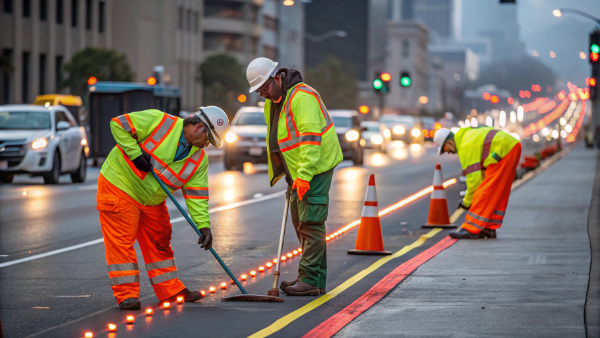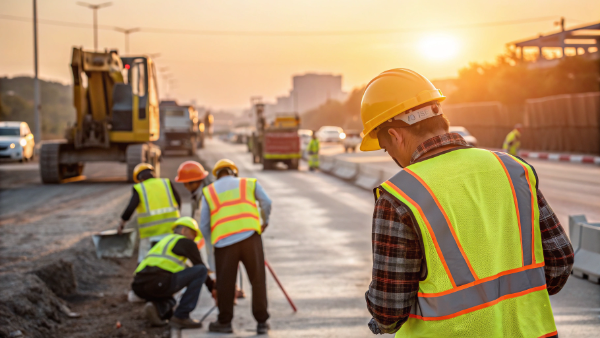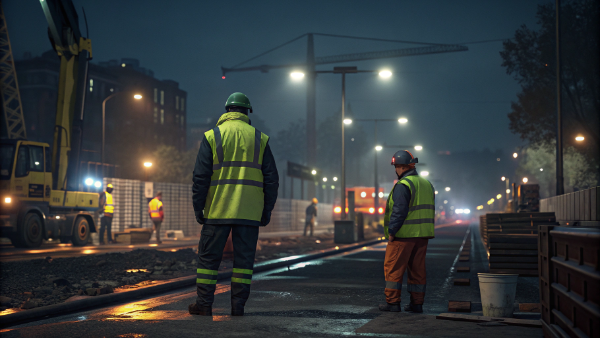Your team faces risks on the job every day. A single accident can be devastating for them and your business. Proper workwear is the essential first line of defense.
Workwear clothing is essential for providing safety, protection, and functionality in hazardous jobs. It acts as a barrier against workplace risks, improves worker visibility, and offers the durability and comfort needed to perform demanding tasks safely and effectively, while ensuring compliance with safety standards.
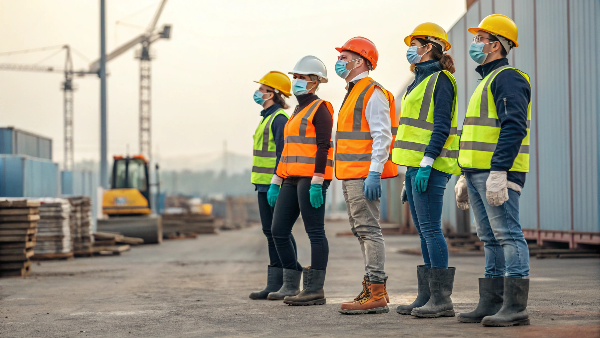
For over 20 years, I've dedicated my life to manufacturing high-visibility apparel. I've seen firsthand how the right gear can prevent tragedy and how the wrong gear can cause it. It's more than just clothing; it's a vital tool that protects your most valuable asset: your people. We will explore why investing in high-quality workwear is not just a good idea, but a business necessity. Let's dive in.
Why is workwear important?
Unprotected workers are constantly vulnerable on site. This exposure can lead to serious injuries or worse. The right apparel is designed to mitigate these specific, daily risks.
Workwear is critically important because it protects employees from job-specific hazards, ensures they are visible in high-risk environments, and upholds legal safety requirements. It builds a professional image and is a cornerstone of a strong safety culture1, demonstrating a company's commitment to its team.
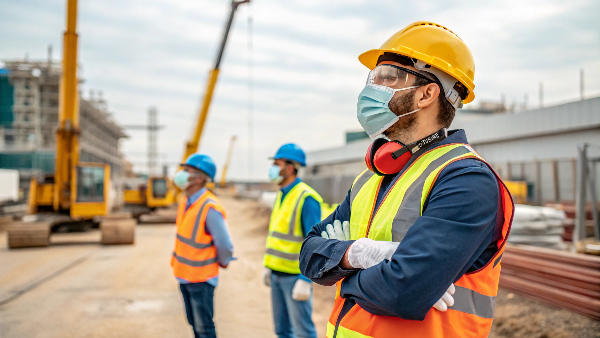
In my experience, the importance of workwear2 operates on several levels. I remember working with a long-term client, Danny Cheng from California, who supplies gear to construction crews. For him, "important" means his clients trust him to keep their workers safe. If the gear fails, that trust is broken. For his customers, the construction companies, it's about minimizing risk and avoiding the huge costs associated with accidents. For the worker on the ground, it's simply about going home safe at the end of the day. We see our role as the manufacturer supporting this entire chain of responsibility. Our triple-inspection process ensures that every single garment we ship meets the standards required to protect lives. It's a responsibility we take very seriously, because we know how much is on the line.
| Level | Why Workwear is Important |
|---|---|
| Individual Worker | Provides direct protection from injury and environmental hazards. |
| Company/Employer | Ensures legal compliance, reduces liability, and improves productivity. |
| Brand/Distributor | Builds a reputation for safety, quality, and reliability. |
What is the purpose of work clothes?
Your everyday clothes wear out fast on a job site. They offer almost no real protection. Specialized work clothes3 are built tough to last and keep you safe.
The main purpose of work clothes is to create a functional barrier between the worker and potential workplace hazards. This includes protecting from physical injury, enhancing visibility to prevent accidents, and providing the durability and comfort required to perform difficult jobs efficiently.
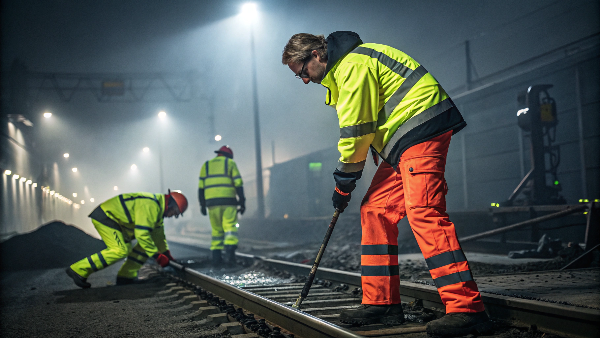
The purpose of workwear goes far beyond just covering the body. Each garment we design in our facility is engineered with a specific purpose in mind. We have an R&D lab with over 75 testing devices to make sure every product does its job correctly. For example, a safety vest's purpose is to make the wearer stand out against a complex background. A pair of flame-resistant coveralls' purpose is to give a worker critical seconds to escape a flash fire. We even develop garments with special purposes, like our cooling fabrics designed for workers in hot climates, which help prevent heatstroke. The purpose is always rooted in solving a specific safety problem for the person wearing it. It's a science of combining materials, design, and construction to create a tool for survival.
Key Purposes of Different Workwear Types
| Workwear Item | Primary Purpose | Key Feature |
|---|---|---|
| High-Visibility Vest4 | To make the worker easily seen by vehicle operators. | Fluorescent material and retroreflective tape. |
| Flame-Resistant Jacket | To protect against brief thermal exposures and sparks. | Self-extinguishing, non-melting fabric. |
| Waterproof Trousers | To keep the worker dry and warm in wet conditions. | Taped seams and a waterproof membrane. |
Why is it important to wear safety clothing?
Job sites are filled with dangers you can't always see. A moment of inattention can cause a life-changing accident. Safety clothing is your personal, non-negotiable shield against these threats.
Wearing safety clothing5 is vital because it is specifically designed to prevent or reduce the severity of injuries from accidents. It protects you from physical, chemical, and environmental hazards, ensuring you can do your job without risking your health and well-being.

Safety is the absolute core of what we do. It's not just a feature; it's the entire reason our products exist. Over the years, I've seen regulations like ANSI/ISEA 1076 in the US and EN ISO 20471 in Europe become stricter, and for good reason. These standards save lives. Our commitment is to not just meet these standards, but to exceed them. I remember a client who came to us after losing over \$500,000 because of a batch of faulty workwear from another supplier. The color consistency was off, making the garments non-compliant. That's a risk we eliminate. Our triple QC process—before, during, and after production—ensures that every piece of safety clothing we make is reliable. When a worker puts on a Vissafety garment, they are trusting us with their life. It's our job to honor that trust with uncompromised quality.
Why is workwear trendy?
Old-school workwear was often heavy, bulky, and uncomfortable. Nobody felt good wearing it. Today, modern workwear successfully blends safety with style, comfort, and advanced functionality.
Workwear is becoming trendy because modern designs now incorporate contemporary styles, better ergonomic fits, and innovative materials. Companies and workers no longer have to choose between looking good, feeling comfortable, and being safe. Customization also allows companies to build their brand identity.

When we talk about "trendy" in the safety apparel industry, it means something different than in high fashion. For us, a trend is driven by function and innovation. For example, a few years ago, we co-developed a line of lightweight, breathable safety jackets with our partner Danny. The trend was driven by the need for comfortable gear in high-temperature environments. It became popular because it solved a real problem. Another trend is multifunctionality. We designed work pants with detachable reflective strips, reducing replacement costs for clients. The "trend" is about being smarter, more efficient, and more user-centric. A uniform that is comfortable and looks professional makes employees feel valued, which boosts morale and productivity. So yes, workwear is trendy, but its trends are rooted in performance, not just looks.
Why is a work uniform necessary?
A team without a unified look can appear unprofessional. It can also create confusion for customers or on a busy site. A uniform instantly unites your team and builds brand recognition.
A work uniform is necessary to create a professional brand image, improve team unity, and make employees easily identifiable to customers and supervisors. Critically, it also standardizes safety, guaranteeing that every team member is equipped with the correct level of personal protection for their role.
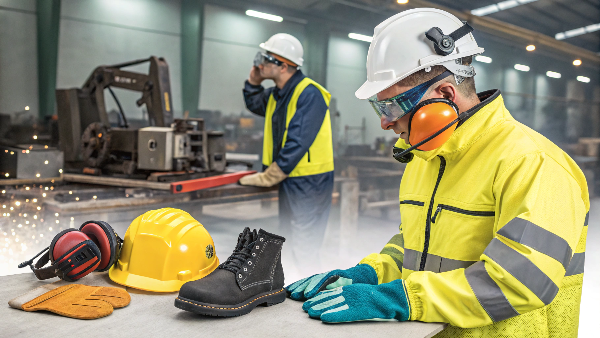
A uniform serves two critical business functions: branding and safety. On the branding side, it's a powerful marketing tool. We offer extensive customization—from screen printing and embroidery to specific color schemes—so that a company's workwear becomes a symbol of its professionalism. When a team arrives on site in matching, high-quality gear, it sends a strong message of competence and reliability. On the safety side, a uniform removes guesswork. A manager knows at a glance that every person on their crew is wearing apparel that meets the site's safety requirements. There are no weak links. It standardizes protection across the entire team, which is one of the simplest and most effective ways to enforce a safety policy.
Uniform Benefits: Employer vs. Employee
| Beneficiary | Key Advantages of a Work Uniform |
|---|---|
| The Employer | Enhances brand image, ensures safety compliance, improves team security. |
| The Employee | Eliminates guesswork on what to wear, provides guaranteed protection, fosters team spirit. |
What is the primary purpose of protective clothing in the workplace?
You cannot anticipate every single danger on the job. Low light, chemical splashes, and sudden impacts are constant threats. Protective clothing serves as your first and best line of defense.
The primary purpose of protective clothing, or Personal Protective Equipment (PPE), is to shield the wearer from specific workplace hazards that could cause injury. It is the last line of defense when other safety controls, like machine guards or procedures, are not sufficient.
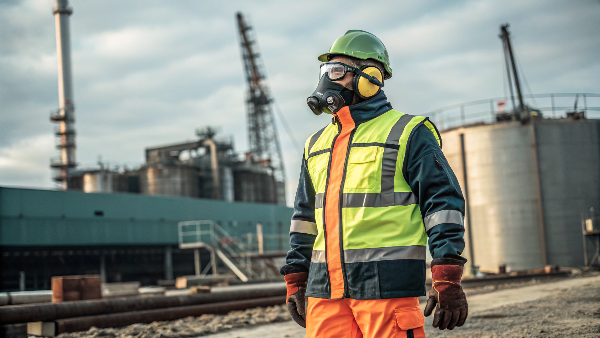
At its core, protective clothing is a barrier. Its job is to stand between the worker and a hazard. But the type of barrier must match the type of hazard. You wouldn't use a simple rain jacket to protect against chemical splash. That is why we have invested so heavily in our testing lab and production technology. We need to create the right barrier for every risk. For low visibility, the barrier is fluorescent material and reflective tape that bounces light back to its source. For extreme heat, the barrier is our specialized cooling fabric that wicks moisture away and promotes airflow. For road crews, we might create a garment that is waterproof, highly visible, and lightweight. The primary purpose is always protection, but executing that purpose requires deep knowledge of materials, environments, and human factors.
What are the consequences of not wearing PPE?
Cutting corners on safety might feel faster in the moment. But one single accident can lead to severe injury, lost work, and massive fines. The consequences are never worth the risk.
Not wearing PPE can lead to catastrophic consequences, including severe injury, permanent disability, or even death for the employee. For the company, it can result in crippling legal action, government fines, project shutdowns, soaring insurance costs, and irreparable damage to its reputation.

The consequences are devastating for everyone involved. I think about this from the perspective of our B2B clients. Their biggest fear is a workplace accident. For the employee, the cost is physical and emotional—pain, lost income, and a potentially altered life. For the business, the costs are immense and multilayered. First, there are the direct costs: regulatory fines from bodies like OSHA and massive legal fees. Then come the indirect costs: work stoppage, loss of experienced personnel, increased insurance premiums, and a damaged reputation that can make it hard to win future contracts. This is why our certifications like ISO, BSCI, and WRAP are so important. They are proof that we are a reliable partner in helping our clients avoid these terrible outcomes by providing gear they can trust without question.
What's the most effective tool in workplace safety?
Companies spend a fortune on complex safety programs. Yet, preventable accidents still happen. The most effective tool in the safety toolbox is often the simplest and most consistently used one.
While a strong safety culture is the ultimate goal, the most effective physical tool in workplace safety is high-quality, appropriate Personal Protective Equipment (PPE). Correct and consistent use of reliable PPE serves as the final, critical barrier that stands between a worker and a hazard.
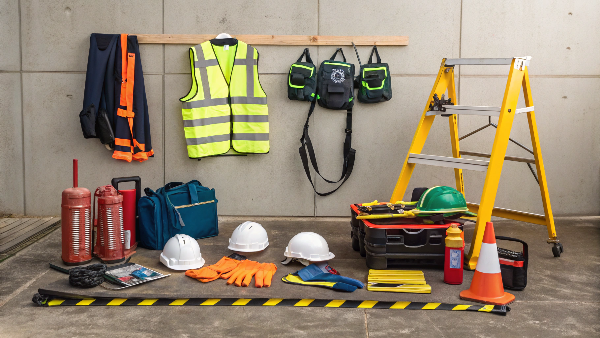
Over my 20+ years in this business, I've learned that you can have all the best training and procedures, but if the physical tools fail, the system breaks down. That makes high-quality PPE the most effective tangible tool. A tool is only effective if it works every time. That’s why we built our business around reliability. With over 20 production lines and an annual capacity of 10 million units, our focus is on consistency. Our triple-inspection quality control ensures that the first garment from a production run is identical in safety and quality to the last one. When we supply a client like Danny in the US, he's not just buying jackets; he's buying peace of mind. He knows that every item will perform as expected, protecting both his clients' workers and his own company's reputation. That reliability is the mark of a truly effective safety tool.
Conclusion
Investing in high-quality, compliant workwear is not an expense. It's a critical investment in your people's safety, your company's reputation, and your overall success. Protect your team.
-
Understanding safety culture can help organizations foster a safer work environment and improve employee well-being. ↩
-
Exploring this link will provide insights into how workwear enhances safety and compliance in various industries. ↩
-
Explore the benefits of work clothes to understand how they enhance safety and comfort in various job environments. ↩
-
Learn about the critical role of High-Visibility Vests in preventing accidents and ensuring worker safety on job sites. ↩
-
Explore this link to understand how safety clothing can protect workers from various hazards and enhance workplace safety. ↩
-
Learn about ANSI/ISEA 107 standards to see how they ensure safety and compliance in workwear, crucial for protecting workers. ↩

